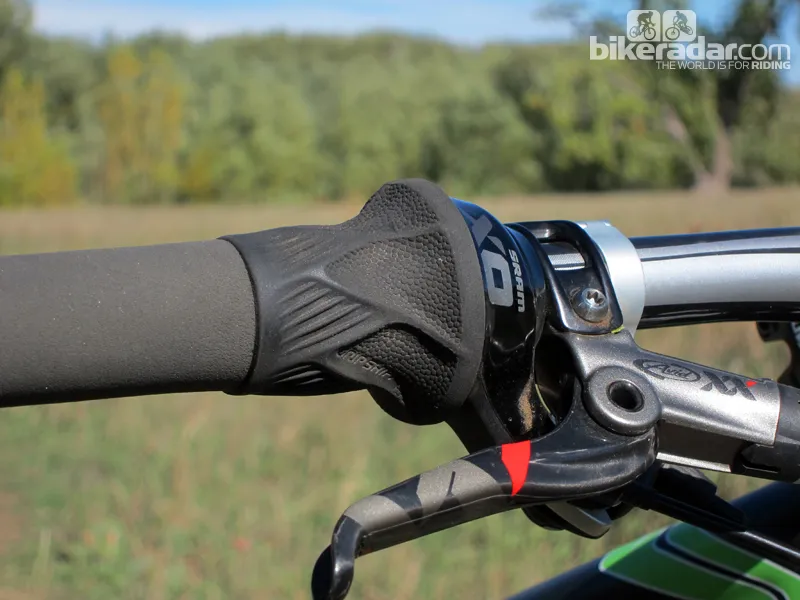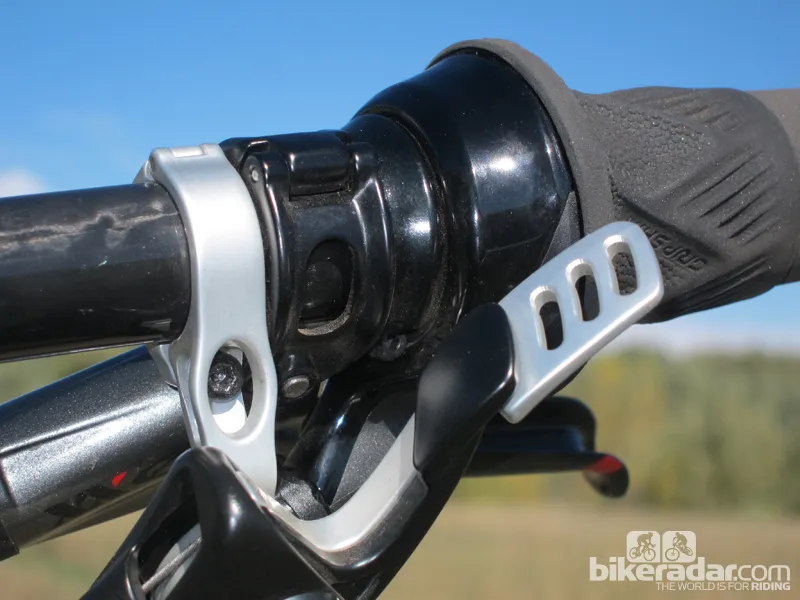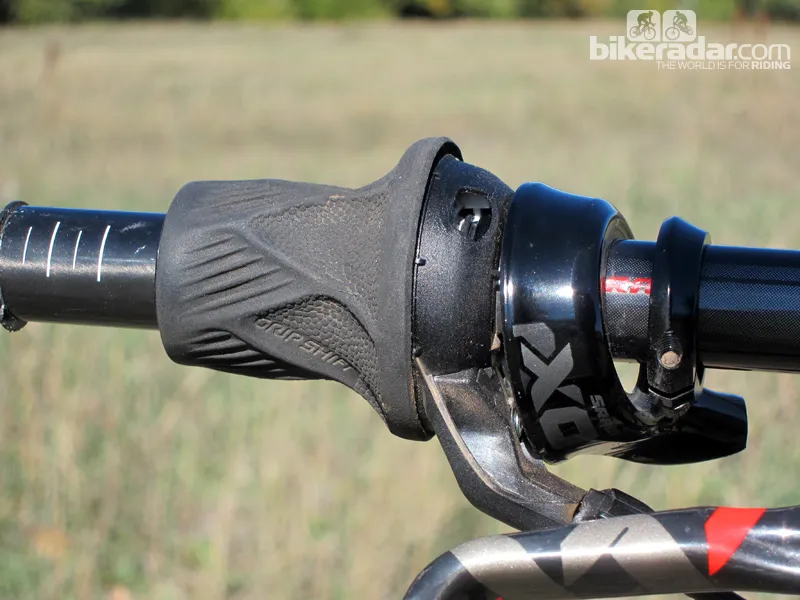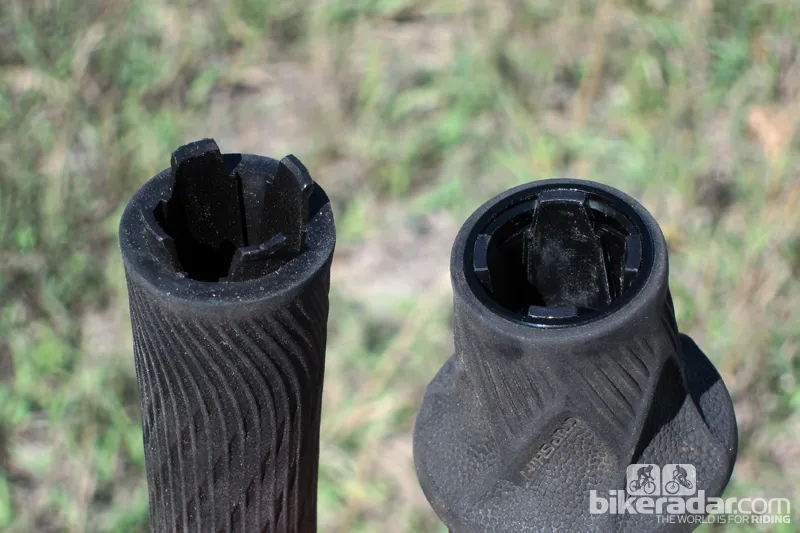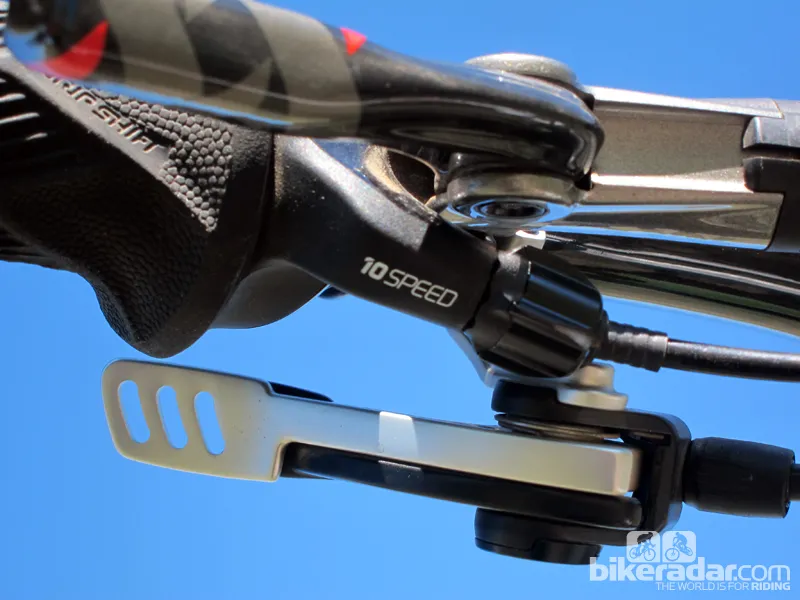After a long hiatus, SRAM reintroduced Grip Shift twist shifters to the world last year, with new 10-speed compatibility and a more advanced internal design.
After more than six months of regular use, we can say that they're winners in terms of performance – and not just for the cross-country racing crowd.
Shifts are just as precise as with the corresponding triggers, and there's good tactile and audible feedback with each change. They're also about 50g lighter than the comparable triggers, at just 179g for the shifters alone, and the ergonomics are fantastic overall, with no need to compromise your grip on the bar – just twist and go.
The new shifters also require very little movement per change. About 120 degrees of rotation push the chain across an entire 10-speed cassette, and less than 20 degrees are needed for a front shift.
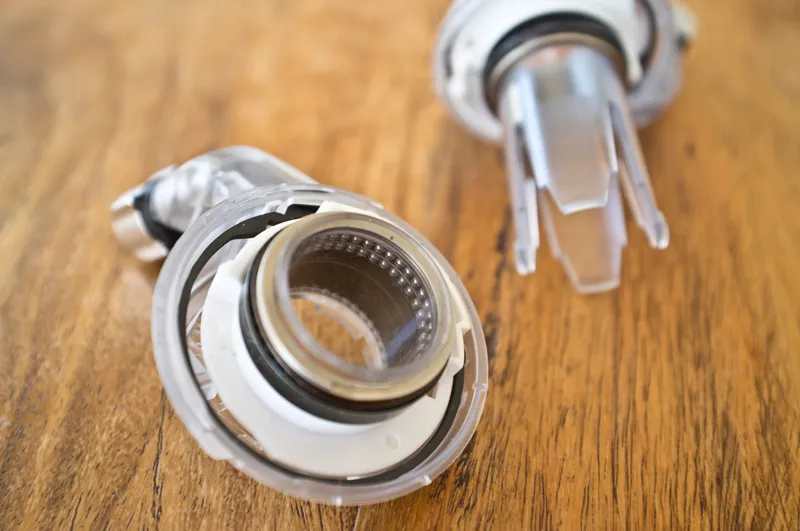
Three rows of steel ball bearings per shifter lend a silky feel to the new Grip Shifts
Some might lament SRAM's decision to omit a micro-ratcheting front shifter. But it's worth noting that we never experienced any cage rub throughout testing, in any gear combinations on a 2x10 SRAM drivetrain. So no trim is actually required, at least when you're running matching SRAM front derailleurs.
Missed shifts are a non-issue in most situations. Our only unintended ones came when we didn’t have a firm hold on the bar, caught an unexpected obstacle with our front wheel or had our weight momentarily thrown forward.
Moreover, we never shifted more gears than intended, even on very bumpy terrain – something we can't always say about the sometimes overly sensitive release paddle on SRAM's triggers. Finally, there's simply no comparison with triggers in terms of multiple shifts – Grip Shift wins hands down.
The more elaborate internal design has given the new Grip Shift a slightly more precise feel, with three rows of steel ball bearings per shifter plus metal-on-metal contact for the springs and ratchets. It's not a huge improvement over well-maintained older Grip Shift shifters, and the fancier design sadly isn't user-serviceable, either, unlike the easily disassembled predecessor.
Gone, too, is the old design's handy external cable port, replaced by a neater but more cumbersome setup that requires moving the grip and/or brake lever.
Our biggest complaint comes with the new Grip Shift's bulkier size. Shifter diameter hasn't changed but old Grip Shift users will likely notice that SRAM has moved the handlebar clamp inboard of the shifter body.
SRAM claims this affects the internal alignment of the bearings and other mechanisms less than a more integrated setup, but it also takes up about 8mm more room on your handlebar. Tossing in the included clamp-on, interlocking grips adds yet another few millimeters relative to standard grips such as ODI's Ruffians.
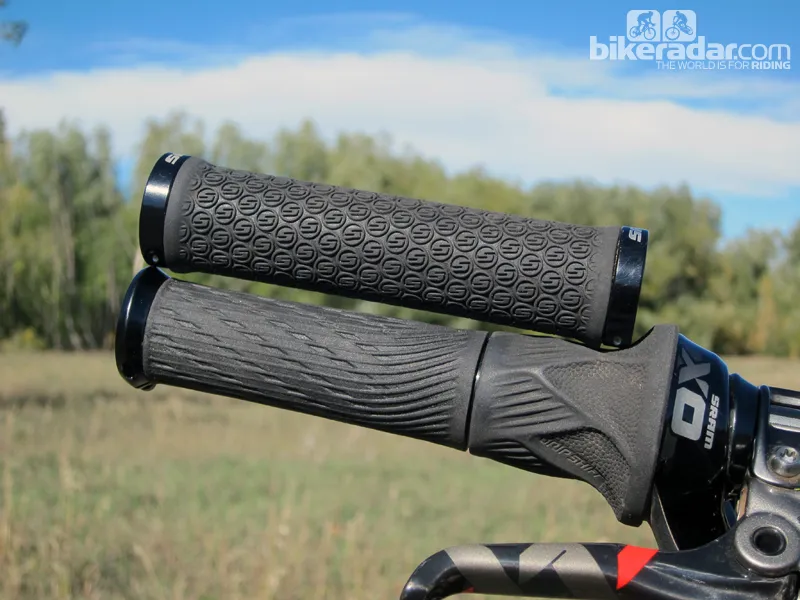
Note the position of the brake lever clamp relative to the end of the two grips
As a result, some riders may find that their brake levers are pushed further inboard than they prefer, negating some of the advantages of running wider bars. Riders used to one-finger braking won't have as much of an issue, but even so, SRAM is definitely walking a fine line.
It's an even bigger issue for riders using a RockShox Reverb seatpost or XX-level fork with XLoc hydraulic remote – but not Avid brakes – as there's no longer any room to mount the control between the shifter and brake lever clamp.
Since the stock grips can't be cut down, we ended up doing most of our testing with custom trimmed ESI foam grips, and had no complaints in terms of ergonomics after the switch.
Our final main complaint centers around the new Grip Shift's cost. At US$225 for the X0 version (US$295 for XX, which only adds carbon covers and Gore Ride-On cables), Grip Shift 2.0 is more than double the cost of the old twisters. The new ones certainly work better, but even so it's a tough pill to swallow.
